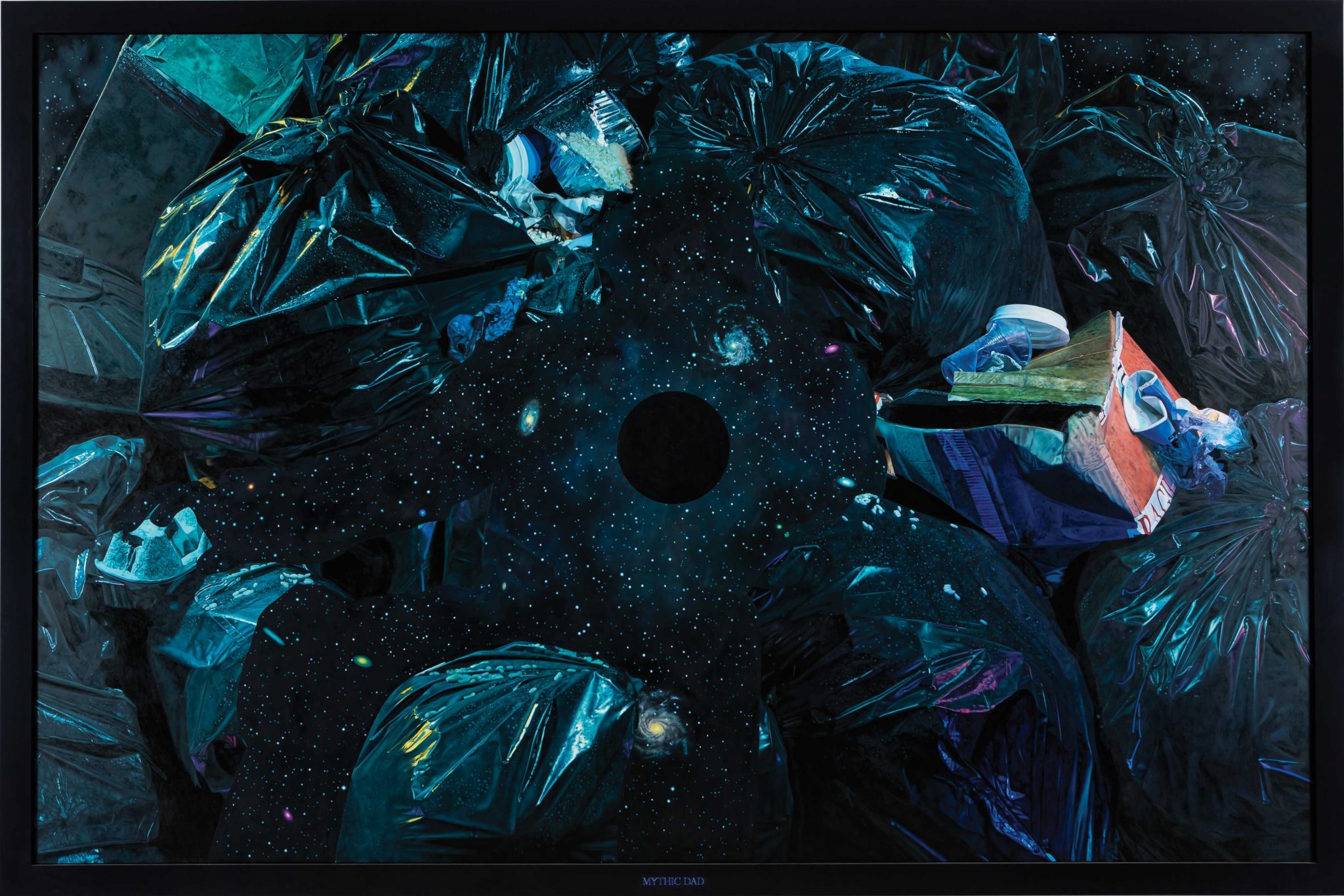‘Everything flows’ may be the most common translation of the ancient Greek phrase Panta Rhei – the title of this latest exhibition of paintings by Keith Tyson – but the idea of a seamless transition from one thing to another, which the term suggests, seems less appropriate to Tyson’s work than the alternative definition ‘All things are in flux’, with its emphasis on the potentially more unsettling idea of constant change.
Perhaps also as much of an overflow as a flow, Tyson’s diverse practice – which stems from an attempt to represent something of the awe- inspiring experience of living, in all its complex and overlapping connectivity – has resulted in equally multifaceted series of objects, paintings, drawings and texts that aim to replicate, in an artwork, how the powerful forces of science, nature, politics, philosophy and history interrelate, compete with and influence each other in life. Here, though, unlike previous bodies of work, the unifying element in this selection of 14 paintings (all made in the last three years) is not their containment within a specific structure or system of making but an attempt at a more poetic layering of imagery and ideas.
In the more abstract and visually fizzing paintings, such as Rhapsody for Random Walks (2010–12), Tyson makes his references obvious. In this work, thin, looping structures resembling tubes, cables or ribbons intertwine with floating, three-dimensional starlike forms and thicker strokes of paint in flesh-coloured hues that remind one of images of the networks formed by brain neurons. This idea of a tangled superhighway along which information travels is reinforced by the insertion, at different points, of interstate highway signs. In other paintings, like The 2nd Law (Mythic Dad) (2010–12) – the 2nd Law (in relation to thermodynamics at least) also implying increasing chaos or change – shiny black bin bags bursting with rubbish hurtle towards a circular central black hole in a starry galaxy. Here it’s the photoreal rendition of the imagery that is explicit, while the meaning is perhaps a little more obscure.
Most interesting though are the works in which there is a greater disruption of surface, such as The Passage of Time Is Perfumed with Your Presence (2012), a painting of a vase of flowers that appears to be simultaneously mutating and disintegrating, and the smaller and quieter title work Panta Rhei (2012), a found painting of a brown sailboat overlaid with fragmented elements of what appears to be a more contemporary marina scene. In one sense these are also the most difficult works – almost too vulgar and brash in the case of the former example and in danger of appearing too tasteful in the case of the latter. But it’s precisely this jarring friction of styles and histories that give these works their energy, like the result of trying to splice an epic poem with a haiku.
This article was first published in the April 2013 issue.
